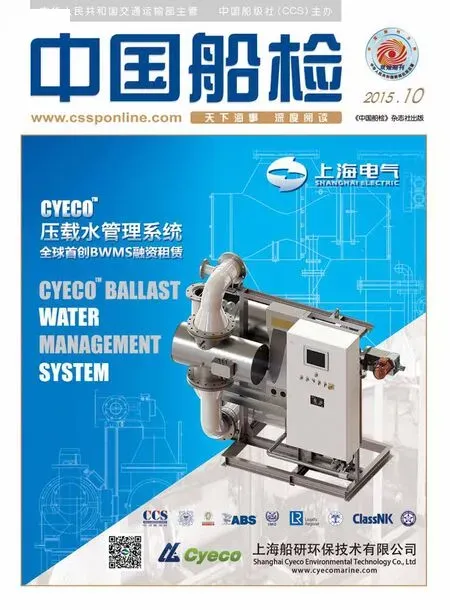Chinese ECA is Almost Ready
Reporter Xu Hua
The Ship and Port Pollution Prevention Act in 2015 (hereinafter referred to as the Act) issued by the Ministry of Transport determines to introduce emission reduction control area in China. How the Chinese ECA will be planned?
According to the introduction of Peng Chuansheng, the Deputy Chief Engineer of the Waterway Academy of Science of the Ministry of Transport, the most realistic measure is to control emission in Chinese inland waters at this stage, including the water between the farthest and the nearest sea levels, as well as islands and ports. For example, EU imposes restrictions on fuel sulfur content for the vessels berthing at docks for more than 2 hours.The United States compulsively requires the vessels to use shore power and the requirements will get stricter in the next few years. Sovereign states could take measures on vessel berthing at their docks and sailing in their inland waters. On one side, they can avoid the tedious application process to IMO, on the other side, disputative sea area can be also evaded. In consideration of regional development level of China and the tolerance level of inland residents, it is realistic to implement the emission control act in certain regional water areas.
This self-select emission control area mode can be tailored for certain control for a certain type of ports or vessels. Difficulty and geographical range to implement the policy can be also determined, as well as port range and the vessel types. For inland waters, some compulsory measures are feasible. This is different from territorial sea, where the international laws can not be ignored. For developed cities and areas, where the resident income is relatively high, people needs a better living quality and environment, it is necessary to take some measures to control emission. At present, there are three areas in China that meet the requirements to establish area emission control, including Pearl River Delta, Yangtze River Delta and Bohai bay.
Establishing emission control area may affect shipping enterprises and ports at the same time. Ports of great homogeneity in China go under fierce competition.Emission control inevitably increases operation costs and weakens advantages of these ports to a certain extent. For example, Hong Kong begins to control sulfur emission forcibly, and more vessels call at Shenzhen port instead.
Therefore, collaborative measures should be implemented to promote emission reduction measures. Before the Act is officially published, each port should make suggestions to serve local benefits. The Act only makes demands on vessels berthing, such as use of low sulfur oil, and makes no requirements on ships in operation for management considerations. However, vessel emission reduction is still developing that requires cooperative efforts of all sides.

